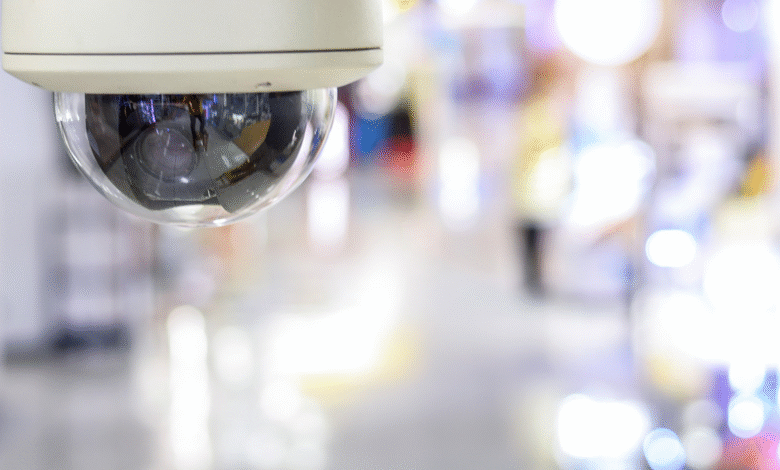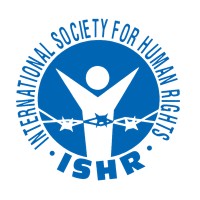ImpACT International | AI and Surveillance Are Reshaping Global Human Rights Protections Rapidly

Artificial Intelligence (AI) and advanced surveillance technologies are revolutionizing modern society, but their rapid adoption has rippled through the domains of privacy, civil liberties, and social justice. The integration of facial recognition, predictive policing systems, and algorithmic decision-making tools into law enforcement and state governance poses deeply profound risks—and, on occasion, benefits—for human rights. This article examines these risks in detail, using current cases and expert reports to illuminate pressing concerns about transparency, accountability, and the rule of law.
AI in Law Enforcement
AI has transformed law enforcement, promising greater efficiency and precision. Tools such as predictive policing and AI-powered surveillance cameras enable agencies to analyze vast amounts of data for crime prevention and investigation. However, these advances also present acute ethical and legal dilemmas.
Surveillance and Privacy Erosion
AI-powered surveillance now enables the covert collection, integration, and analysis of deeply revealing personal information. The widespread deployment of AI-driven monitoring—from facial recognition cameras to behavior analysis algorithms—renders traditional notions of privacy nearly obsolete in public spaces. The integration of such technology often occurs without adequate transparency or meaningful consent, marginalizing vulnerable groups and putting democratic freedoms at risk.
The UN High Commissioner for Human Rights has sounded an urgent alarm:
“A moratorium on the sale and use of artificial intelligence (AI) systems that pose a serious risk to human rights is needed until adequate safeguards are put in place.”
This includes applications used for profiling, automated decision-making, and predictive policing—which can impact people’s privacy, health, education, freedom of movement, assembly, and expression.
Predictive Policing and Discriminatory Outcomes
Predictive policing relies on AI algorithms to forecast locations or individuals at risk of crime, aiming to optimize police deployment and reduce crime rates. Yet emerging research and civil society reports reveal severe drawbacks:
Institutionalized Bias: These systems are often fed historical police data reflecting pre-existing biases, supercharging racism and classism. “Predictive policing systems encourage ‘racist and discriminatory policing and criminalization of areas, groups and individuals’, perpetuating institutional racism in policing and wider society,” stated Amnesty International in a 2025 report.
Threat to Fundamental Rights: The algorithms recycle and amplify patterns of over-policing in marginalized communities, undermining the right to non-discrimination, privacy, fair trial, and freedom of association.
Efficacy Shortcomings: Studies by Upturn and joint civil rights coalitions have found scant evidence that predictive policing helps reduce crime, but considerable indication it reinforces harmful stereotypes and law enforcement behaviors.
ACLU and Human Rights Watch warn:
“Predictive policing tools threaten to provide a misleading and undeserved imprimatur of impartiality for an institution that desperately needs fundamental change. Systems that are engineered to support the status quo have no place in American policing.”
Facial Recognition in Authoritarian States
Facial recognition technology, empowered by AI, has emerged as a potent weapon for both democratic and authoritarian governments. While its deployment in liberal democracies has raised questions, the risks are often magnified in states with weak civil liberties protections.
The Technological Panopticon
AI-powered facial recognition can identify individuals in real time within crowds, connect public actions to private identities, and make disinformation and reputational attacks easier and more scalable. The possibility of being perpetually recognized and tracked chills free assembly and amplifies self-censorship.
China’s Surveillance Grid
No country epitomizes the scale or intrusiveness of AI surveillance like China, where facial recognition is intertwined with the state’s pervasive monitoring of daily life. Cameras are embedded in public and private spaces—from transport hubs to toilets—feeding data into systems used to track dissidents and ethnic minorities, notably Uyghurs, under the guise of maintaining public order. The system is tightly integrated with China’s evolving social credit infrastructure, incentivizing “compliant” behavior and punishing dissent.
Human Rights Watch has documented:
“China’s surveillance state leads the way: no country deploys facial recognition so extensively or more ruthlessly… The state is obsessed with tracking what people are doing and who they’re doing it with, constantly scanning for the slightest sign of dissent or divergence from the narrow party and national identity it expects people to adhere to.”
Hungary and Russia offer recent European examples, weaponizing facial recognition to monitor LGBTQI+ activists and opposition protesters, raising the specter of digital authoritarianism in the heart of Europe.
Clearview AI: A Case Study
Clearview AI, a U.S. company, scraped billions of photos from the internet to build a facial recognition database used by law enforcement and private entities globally. This sparked litigation and regulatory actions:
Ethical and Legal Challenges: The American Civil Liberties Union (ACLU) filed a lawsuit alleging Clearview violated the Illinois Biometric Information Privacy Act (BIPA) by collecting facial data without consent. “Face recognition technology offers a surveillance capability unlike any other technology in the past. It makes it dangerously easy to identify and track us at protests, AA meetings, counselling sessions, political rallies, religious gatherings, and more,” the ACLU emphasized.
International Pushback: The company has been fined €30.5 million by Dutch regulators for violating the EU’s GDPR, and was similarly found in violation by data protection authorities in Italy, Germany, and Belgium.
Human rights groups contend:
“If not stopped, Clearview AI would ‘end privacy as we know it’ and pose a disastrous threat to vulnerable communities, including survivors of domestic violence and sexual assault, undocumented immigrants, and people of color.”
Algorithmic Bias and Social Justice
Algorithmic bias refers to systematic errors in AI decision-making that produce unfair outcomes—often disproportionately harming women, ethnic minorities, and marginalized groups. In surveillance and law enforcement, this can mean wrongful identification, exclusion from benefits, and perpetuation of pre-existing inequalities.
Drivers of Bias
Historical Data: AI is only as unbiased as the data it trains on. When police or social data reflects institutional discrimination, those biases are absorbed and amplified.
Technical Opacity: The lack of transparency around AI “black box” systems means victims of AI bias often lack the means to challenge or even detect discriminatory outcomes. This undermines the right to due process and effective remedy.
Marginalization by Automation: Groups already facing societal prejudice—racial minorities, immigrants, LGBTQI+—are at heightened risk from algorithmic abuses in both policing and welfare decisions.
Reports from the Geneva Academy and the UN emphasize that states have a duty to protect, fulfill, and respect human rights through the entire AI system lifecycle. Stronger regulatory frameworks are needed, including mandatory transparency, human oversight, and accessible redress mechanisms.
The Legal Vacuum in AI Governance
While the dangers are well-documented, contemporary legal frameworks often lag behind technological realities. Regulation of AI and surveillance, where it exists, is fragmented, reactive, and sometimes voluntary—leaving human rights routinely endangered.
International and National Gaps
No Universal Standard: There is currently no binding global convention specifically governing the use of AI in surveillance with respect to human rights. Existing safeguards—from the Universal Declaration of Human Rights (UDHR) to the International Covenant on Civil and Political Rights (ICCPR)—are often insufficient, as states and corporations exploit legal gray areas.
Patchy National Laws: Some countries, like those in the EU, have robust data protection rules and have fined companies like Clearview AI for violations. Yet many parts of the world have little or no statutory protection against biometric surveillance or AI abuse.
Corporate Impunity: Powerful tech companies often operate transnationally, exploiting regulatory arbitrage and a lack of effective enforcement to pursue business models fundamentally at odds with privacy and data protection.
The Push for Global Standards
Global entities—including the UN High-Level Advisory Body on AI, UNESCO, and civil society groups like Access Now—are calling for international governance mechanisms grounded in human rights:
The UN Secretary-General urged:
“We must shape an international AI architecture that is inclusive, agile, and effective… anchoring AI governance in international norms and principles, including human rights.”
Access Now insists:
“AI governance does not take place in a vacuum, and must be rooted in robust human rights regimes.
Recent proposals recommend:
Binding international treaties for AI ethics.
Creation of independent oversight bodies and audit mechanisms.
“Privacy by design” and explicit bans on systems with unacceptable human rights risks (such as real-time mass biometric surveillance).
Toward Rights-Respecting AI
AI and surveillance technologies are potent tools—capable of enhancing security, but also of enabling previously unimaginable intrusions into private life and political liberty. Without firm ethical and legal guardrails, these technologies threaten to erode democracy, entrench discrimination, and imperil the very notion of fundamental rights.
Urgent steps are needed:
Close legal gaps at national and international levels.
Mandate transparency, accountability, and human oversight for all AI systems impacting civil rights.
Center the voices of marginalized communities most affected by AI-powered surveillance.
By putting human rights at the core of governance and technological design, as demanded by Access Now, Human Rights Watch, the UN, and civil society, we can build a robust framework that harnesses AI for collective benefit—while defending the dignity and freedom of all people.
Source link




